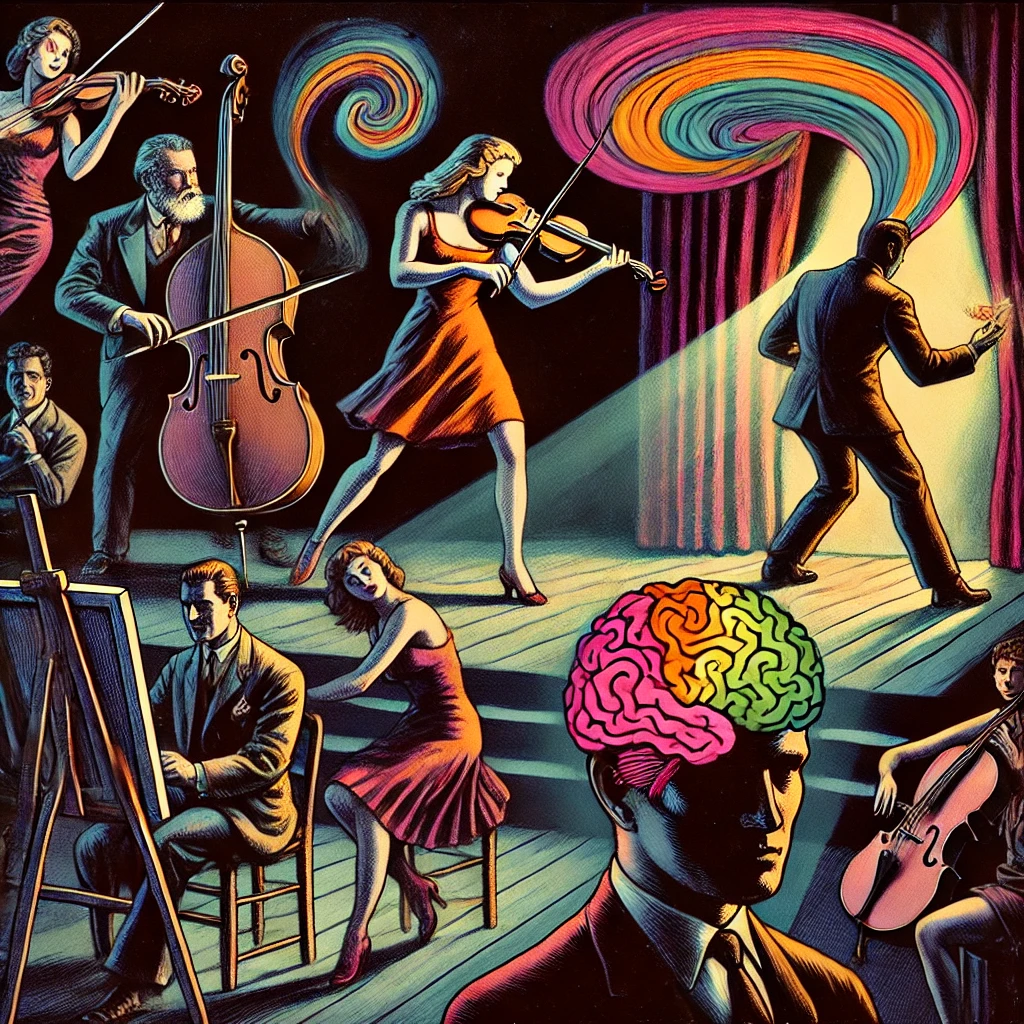How Arts Training Improves Attention and Cognition
Sustained training in music, dance or other arts strengthens the brain’s attention system, which in turn may improve cognition more generally. Evidence for such cognitive “transfer” is accumulating.
Dr. Michael I. Posner: “Does education in the arts transfer to seemingly unrelated cognitive abilities? Researchers are finding evidence that it does. Michael Posner argues that when children find an art form that sustains their interest, the subsequent strengthening of their brains’ attention networks can improve cognition more broadly.”
http://www.dana.org/news/cerebrum/detail.aspx?id=23206

Arts training, including activities such as music, visual arts, dance, and theater, has been shown to have a range of positive effects on attention and cognition. Here are several ways in which arts training can improve these cognitive functions:
1. Enhanced Attentional Control: Engaging in arts activities often requires sustained attention and concentration, particularly when practicing techniques, learning new skills, or participating in performances. Over time, individuals who regularly engage in arts training may develop enhanced attentional control, allowing them to focus more effectively on tasks and resist distractions in other areas of their lives.
2. Improved Working Memory: Arts training often involves memorization, repetition, and rehearsal of information, which can help to improve working memory capacity. For example, musicians must memorize musical scores, dancers must remember choreography sequences, and visual artists must recall visual compositions. This process of encoding, storing, and retrieving information strengthens neural networks associated with working memory and cognitive control.
3. Enhanced Cognitive Flexibility: Arts training encourages individuals to think creatively, explore new ideas, and consider multiple perspectives. This fosters cognitive flexibility, the ability to adapt and shift attention between different tasks or problem-solving strategies. For example, improvisational theater requires actors to respond quickly to changing situations and creatively adapt their performances, promoting cognitive flexibility and adaptive thinking.
4. Increased Spatial Reasoning: Activities such as drawing, painting, and sculpture require individuals to understand and manipulate spatial relationships, proportions, and perspectives. Engaging in these visual arts activities can enhance spatial reasoning abilities, which are important for tasks such as navigation, geometry, and engineering.
5. Emotional Regulation and Empathy: Many arts activities involve expressing and interpreting emotions, which can promote emotional regulation and empathy. For example, musicians often convey emotion through their performances, while actors must empathize with their characters and convey their emotions convincingly. Developing these skills can enhance emotional intelligence and social cognition, leading to better interpersonal relationships and communication.
6. Stress Reduction and Well-Being: Engaging in arts activities has been shown to reduce stress levels and promote overall well-being. Activities such as music listening, drawing, and dance can induce a state of flow, characterized by deep immersion, focus, and enjoyment, which can have a calming and rejuvenating effect on the mind and body.
Overall, arts training offers a holistic approach to cognitive development, combining intellectual, emotional, and social aspects of learning. By providing opportunities for creativity, self-expression, and skill development, arts training can enhance attention, cognition, and overall cognitive functioning across the lifespan.